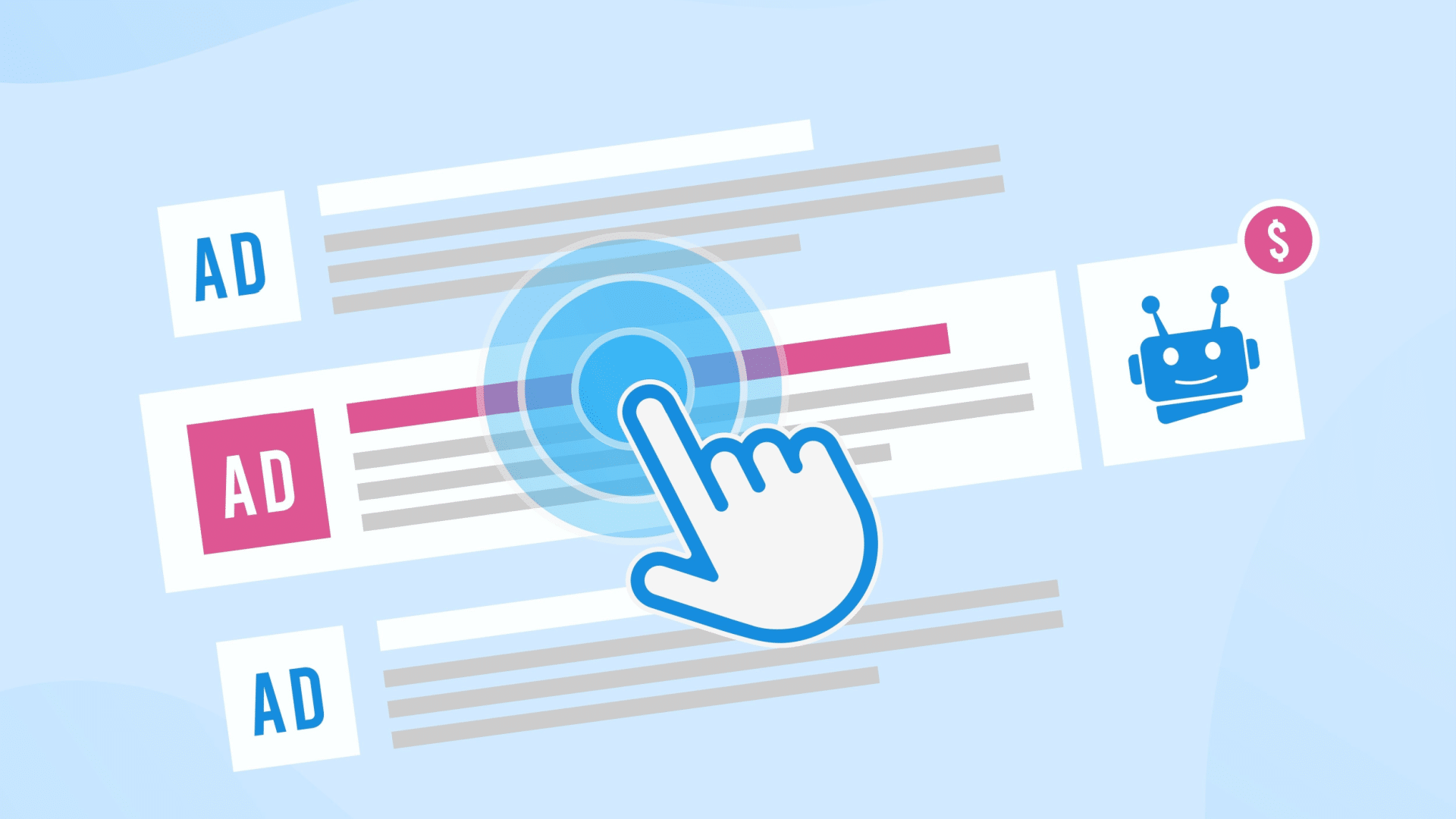As the paid search advertising landscape evolves, AI and language model tools are gaining traction in streamlining and optimizing campaign restructuring processes.
Some paid search specialists are no longer content with the status quo. Others argue that our industry has been using AI all along and that the AI revolution is only a shift in terminology.

Many favor chatbots for answers, driven by a quest for efficiency, creativity and staying current. Julie F. Bacchini, managing director of the PPC Chat community, emphasized the last point during her weekly Slack chat on “Diversification in PPC.”
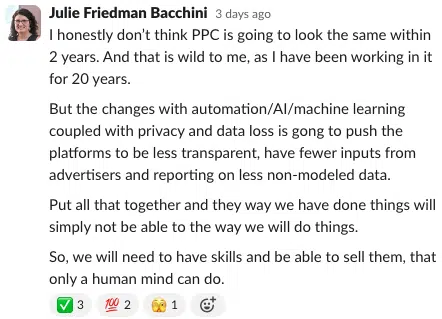

One area where AI shines is streamlining the often tedious and time-consuming process of account restructuring.
Below are six practical ways AI can assist PPC managers when restructuring ad accounts.
1. Finding new keyword ideas for accounts
Keywords are the cornerstone of an ads account.
To reorganize ad accounts effectively, you need to analyze the search term reports and identify fresh keywords to incorporate into ad groups or campaigns.
While necessary, this process can be time-consuming in large accounts. It’s especially confusing for B2B accounts, where separating consumer intent from commercial intent is key.
Here’s where AI can assist. There are tools in the market to help you:
- Analyze datasets: AI can identify new and valuable keywords that might have been overlooked.
- Surface statistically significant opportunities: Some search terms need more data before they are actionable.
AI tools don’t just identify new terms; they also assess statistical significance. This ensures you focus on terms with a proven track record of driving conversions.
Consider Optmyzr, a popular AI-powered tool that seamlessly integrates with platforms like Google Ads and Microsoft Advertising and automatically analyzes your search terms report.
Based on its analysis, it recommends relevant keywords for inclusion in existing ad groups or the creation of new ones.
This eliminates the need for manual data downloads, spreadsheet analysis and filtering.
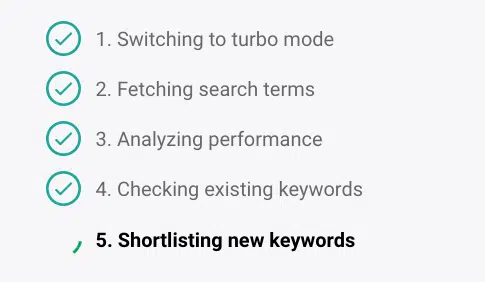

Most importantly, Optmyzr utilizes statistical significance to ensure its recommendations are impactful.
2. Categorizing keywords by theme
Effective paid search campaigns rely on well-organized ad groups with thematically related keywords.
Another reason to restructure is if a previous ad manager accidentally added thousands of keywords from auto-recommendations or didn’t understand the importance of keeping ad groups tightly themed.
Grouping keywords by theme ensures your ads resonate with user search terms. This is where large language models like ChatGPT and Google’s Gemini come into play.
Imagine this:
You can effortlessly paste thousands of keywords in a chatbox and ask the tool to organize all the keywords by theme.
Manually grouping thousands of keywords by theme can be an overwhelming task.
Enter large language models. By feeding these models your keyword list (even exceeding 2,000 keywords), they can identify and categorize themes with remarkable speed and accuracy.
Checking for duplicates is crucial because ad groups often have overlapping keywords. Keep refining the themed keyword list until it’s more manageable to reduce redundancy.
Get the daily newsletter search marketers rely on.
3. Tailoring ads more closely to the user’s search query
This translates to improved ad relevance, higher quality scores and increased campaign effectiveness.
Once you have thematically grouped keywords, writing ad copy becomes a necessity.
You need to tailor your ad copy to the specific theme of each ad group, ensuring a more relevant and impactful message for users.
Restructuring often involves creating new ad groups.
Writing responsive search ads (RSAs) can be arduous because of the many headlines and descriptions needed. However, AI can help.


Let’s consider ChatGPT and the following prompt:
- “Write me 15 different headlines that are 30 characters or less for a Google Search Ad for my gourmet cookie business.”
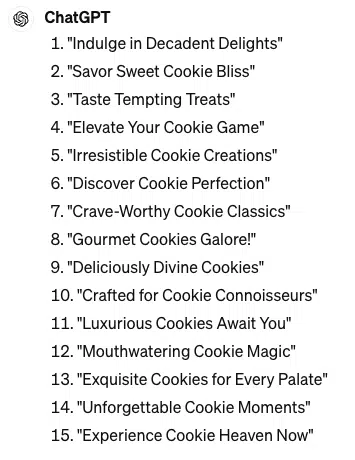

Remember that human oversight is still important. While AI can certainly spur creativity, the human factor remains irreplaceable. In the example above, some AI-generated headlines might exceed the character limit or lack the desired punch.
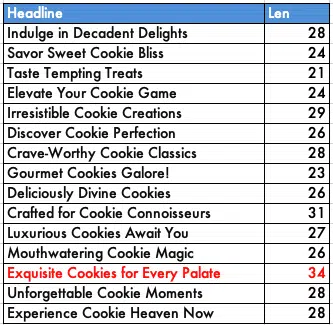

The best approach is to leverage AI for initial brainstorming and then refine the generated content with your unique human touch.
4. Assisting with image creation
Google Ads’ AI-powered image generation tool accelerates the testing process and economizes time and resources by generating fresh imagery.
Reducing time and cost is particularly impactful for brands operating on limited budgets competing in a platform where images are an important tool.
Also, there’s a theory that platforms might prioritize content created with new features like AI generation. This could temporarily boost your ads while the platform gathers data on its tool.
While the exact impact is unclear, some advertisers can benefit from AI-generated images.
Take an online-only gourmet soup shop, for example. Unlike clothing with distinct styles, soup bowls can look similar across brands. This is where AI shines.
It can create unique and appetizing visuals for your soup, freeing you from reliance on seasonal photoshoots.
These images can offer variety for testing in an account that otherwise wouldn’t have many images.
Dig deeper: Creating Google Ads campaigns with Gemini conversational AI: How good is it really?
5. Predictive modeling in Google’s Performance Planner
Google’s Performance Planner is an example of AI-driven predictive modeling.
It allows advertisers to forecast how changes in campaigns could affect key metrics like conversions and clicks.
Leveraging the Google Performance Planner both before and after an account reorganization is an excellent method to showcase scalability.
It helps make informed decisions about budget adjustments and optimize campaigns for better results.


6. Automatic bidding in ad platforms
When reorganizing ad campaigns and centralizing data, the reasoning is often to allow campaigns to leverage larger datasets and automatic bidding strategies to work effectively.
Bid strategies are not always considered AI but rather machine learning.
However, bid strategies use machine learning to automatically adjust bids based on various factors, such as the likelihood of a conversion or the competitiveness of an auction. So, in that sense, bid strategies can be considered a form of AI.


Dig deeper: How each Google Ads bid strategy influences campaign success
AI-powered PPC optimization: Boosting efficiency and strategy
Despite being available for years, AI tools like Optimzr and various in-platform features frequently go unrecognized as AI, largely because the prevailing perception equates AI with chatbots.
However, AI encompasses more than just chatbots; it involves computers making decisions rapidly.
These technologies offer options for advertisers, encompassing everything from keyword research and ad group organization to writing RSA ad copy and generating images.
Predictive modeling and automatic bidding strategies enhance campaign optimization and save paid search managers valuable time, fitting perfectly within the broad definition of AI tools.
AI integration enables paid search managers to be more effective in building campaigns and changing accounts. This lets you transition into a more strategic role, moving beyond merely executing tasks to shaping strategies and outcomes.
Opinions expressed in this article are those of the guest author and not necessarily Search Engine Land. Staff authors are listed here.





